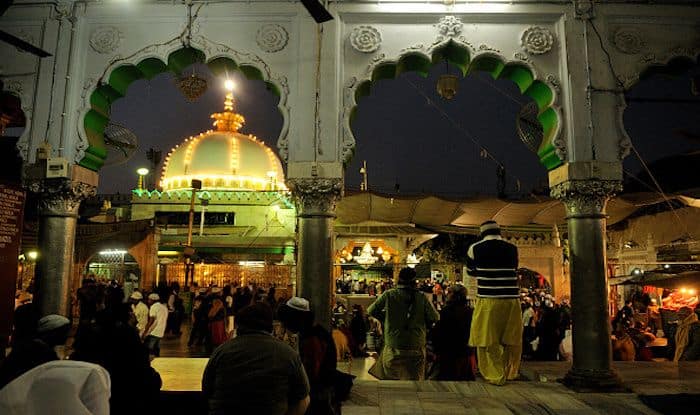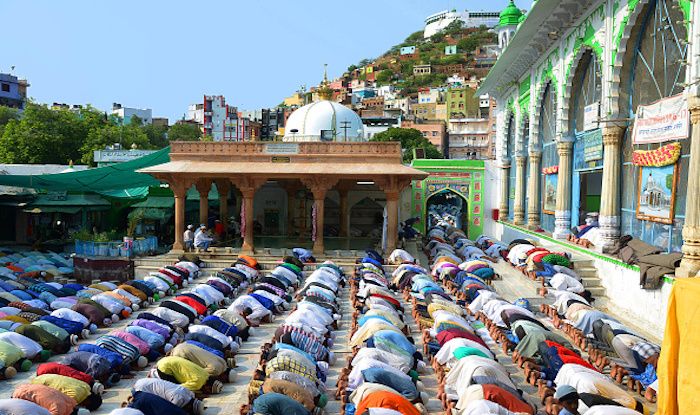
By clicking “Accept All Cookies”, you agree to the storing of cookies on your device to enhance site navigation, analyze site usage, and assist in our marketing efforts Cookies Policy.

There’s much to see in the bustling town of Ajmer, only 130 km from Jaipur and 13 km from the pilgrimage town of Pushkar. Though Ajmer is used as a stepping stone to Pushkar, especially now when its time for the Pushkar Camel Fair, here’s reminding to keep a day or two aside for this town with marvellous history. The city surrounds the expansive lake of Ana Sagar with the rugged Aravalli Hills rising on all sides.
In terms of Islamic history and heritage, it houses one of India’s most important Muslim pilgrimage centres, the shrine of Khwaja Muin-ud-din Chishti, who founded the Chishtiya order, the prime Sufi order in India. There are also some superb examples of early Mughal architecture, and an amazing golden Jain temple representing the Jain religion.
Dargah of Khwaja Muin-ud-din Chishti is where the tomb of Sufi saint Khwaja Muin-ud-din Chishti is kept, who came to Ajmer from Persia in the 12th-century. The tomb gained its significance during the time of the Mughals – many emperors added to the buildings here. Construction of the shrine was completed by Humayun; the gate was added by Nizam of Hyderabad and Akbar used to make a pilgrimage to the dargah from Agra every year.
It’s imperative that you cover your head in certain parts of the shrine, so remember to take a scarf along – there are plenty for sale at the colourful bazaar leading to the dargah, along with floral offerings and delicious sweets.
Once you’re through the main entrance through Nizam Gate, the green and white mosque, Akbari Masjid, stands in all its glory. It now also a centre Arabic and Persian school for religious education. The next gate is called the Shahjahani Gate because it was erected by Shah Jahan.

Ajmer Dargah. Image courtesy: Getty
A third gate, Buland Darwaza leads into the dargah courtyard. Flanking the entrance of the courtyard are the degs (large iron cauldrons), one donated by Akbar in 1567, the other by Jehangir in 1631, where the offerings for the poor are cooked. It’s called Niaz – a mixture of rice, saffron, nuts, ghee, sugar and dry fruits. The food is cooked at night and distributed to the devotees as tabarruk (blessing) after the morning prayers.
Inside this courtyard, the saint’s domed tomb is surrounded by a silver platform. Pilgrims believe the saint’s spirit to intercede in matters of illness or problems; therefore the notes and holy strings are attached to the railings around as a thank you.
It’s the most crowded in the seventh month of the Islamic calendar when the pilgrims and sufis come from all over the world on Urs – the anniversary of the saint’s death.
The most beautiful experience here is when after namaaz is offered, “qawwalis” praising Allah are sung by devotional singers inside Ajmer Sharif’s hall, mehfil-e-sama, every single day.
For breaking news and live news updates, like us on Facebook or follow us on Twitter and Instagram. Read more on Latest Articles News on India.com.